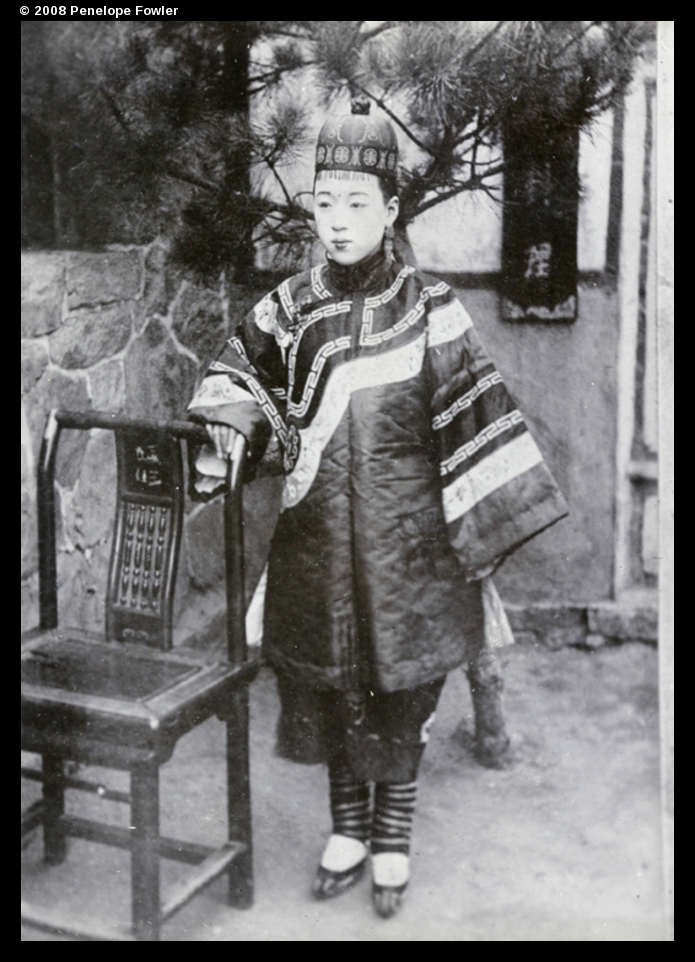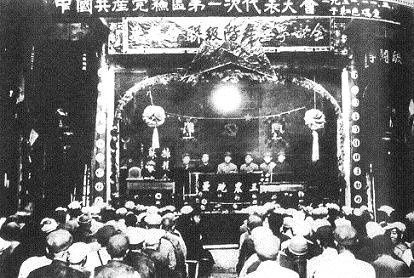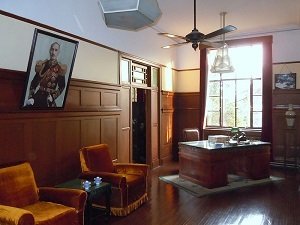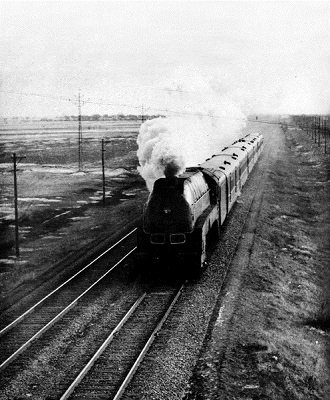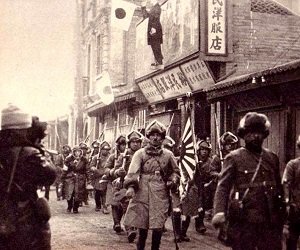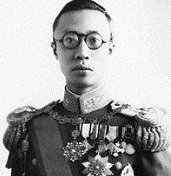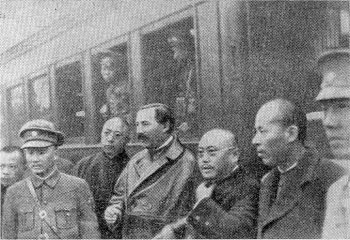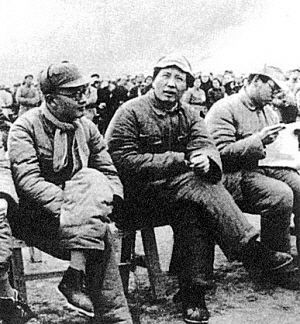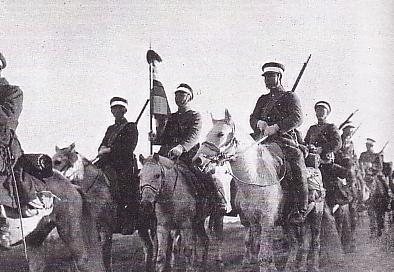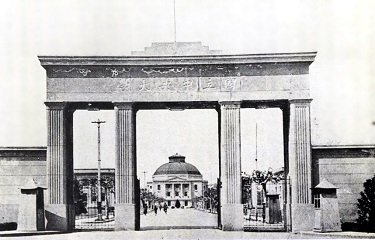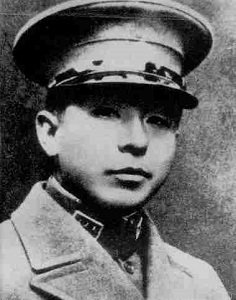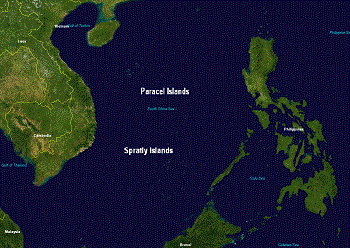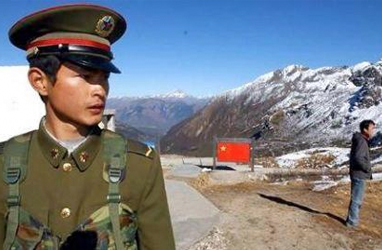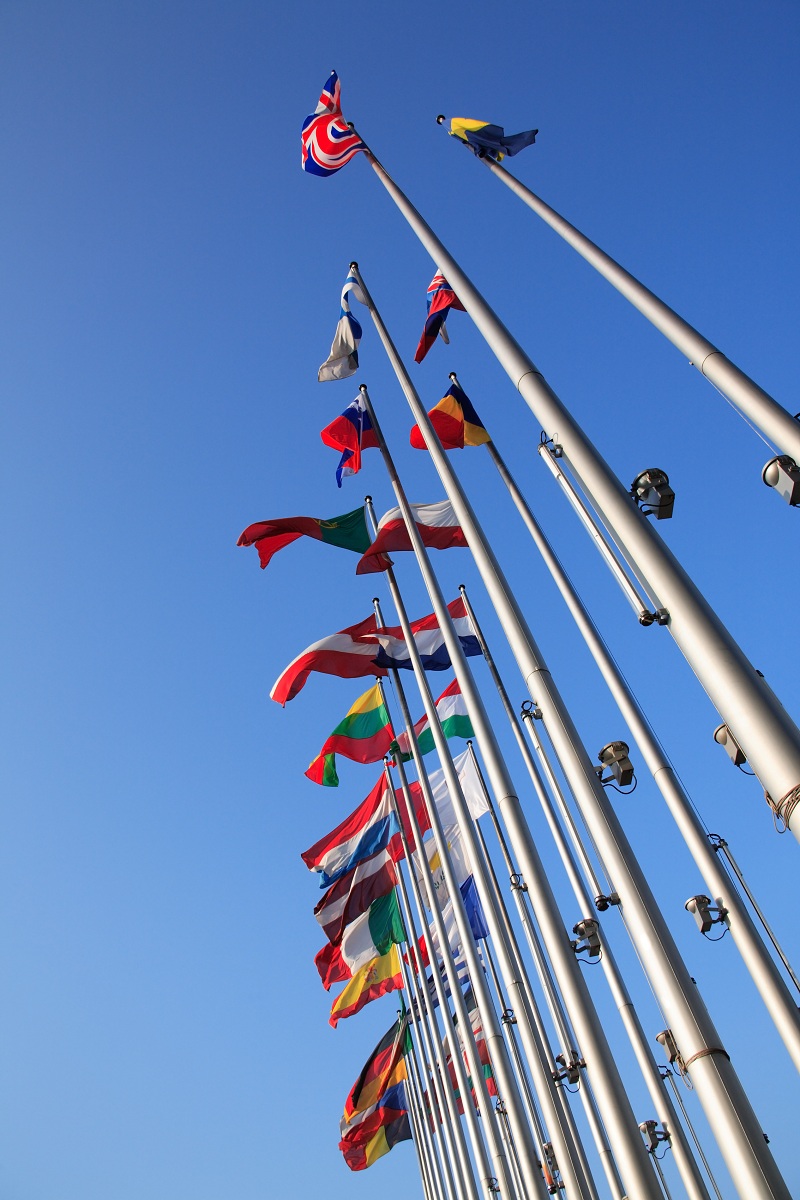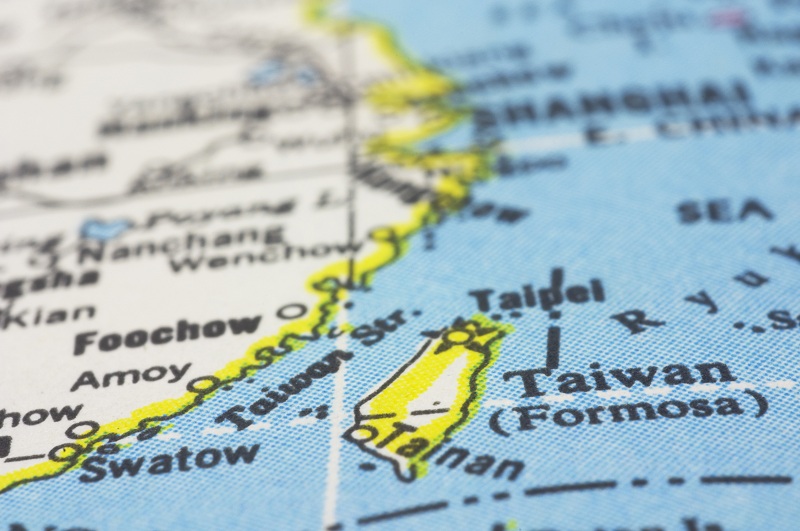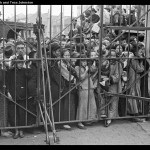Modern Chinese History III: The Nanjing Decade 1927-1937
- Introduction
- Division within the New KMT Leadership and Warlord Challenges
- Japanese Expansion in China
- Communist Insurrection – Disease of the Heart; Disease of the Skin
- Retreat to Ruijin
- KMT Encirclement and Suppression of Communist Campaigns
- The Long March and the Yan’an Communist Base
- The Zunyi Conference
- KMT Struggles and Responses
- The Xi’an Kidnapping and the Second United Front
- What Happened Next
Introduction
The period between 1927 and 1937 is often referred to as the Nanjing decade. The Kuomintang (KMT) established its new government in Nanjing after it had dispelled the Communists from the United Front and it had defeated the warlords to unite the country during the Northern Expedition. The new KMT government was recognized by the international community, most of southern China, and a large part of northern China, although it did not control Manchuria nor did it have perfect control over many of its former warlords.
Instead, Chiang Kai-shek had achieved national unification often by negotiating with these warlords– in effect allowing them semi-independent regional status – in return for their recognition of the new KMT government. Once in government, Chiang Kai-shek tried to consolidate his power by eliminating these warlord rivals where possible. As a result, by 1929, civil strife once again broke out as warlords maneuvered to retain their influence. Dealing with this power struggle meant that the much needed and long promised social reforms were slow in coming. For most Chinese life improved little. This created discontent that the communists would eventually exploit.
The Chinese Communist Party (CCP), forced out of the cities after the Shanghai Coup, retreated into the countryside. It was in these rural areas that the CCP began to develop their ideas for peasant mobilization, championed in large part by Mao Zedong. The communists most important rural base became the Jiangxi Soviet, headquartered in Ruijin in the south of Jiangxi province. There they experimented with governing and with the implementation of new social policies that were to prove the forerunners of practices they assumed once they won control of the country in 1949. However, repeated KMT attacks finally forced the CCP from Jiangxi. In order to evade being encircled and annihilated, the communists began the Long March, retreating through some of the most difficult terrain in western China by traveling west and then north to Yan’an in Shaanxi Province.
As a backdrop to the KMT-CCP struggle was Japan’s increasing expansion into Manchuria and northern China. It was Chiang Kai-shek’s strategy to placate the Japanese while focusing on communist eradication. However, rival KMT leaders finally went to the extreme measure of kidnapping Chiang until he agreed to abandon war against the communists. Instead, the kidnappers forced Chiang to join forces with the CCP in a Second United Front formed to fight growing Japanese aggression. This aggression culminated in Japan’s full-scale invasion of China in 1937.
Division within the New KMT Leadership and Warlord Challenges

National Revolutionary Army Generals at a ceremony held to Sun Yat-sen to report completion of the Northern Expedition to Dr. Sun’s soul
The new Nanjing government of the KMT was to be based on the ideas of Sun Yat-sen and his Three People’s Principles: national self-determination, people’s rights, and people’s livelihood. Confronted with a need to integrate China into an international system based on nation-states, Sun’s principle of national self-determination was an effort to get the Chinese see themselves not just as a culture but as a state. During the dynastic era, what it meant to be Chinese had been defined not so much by race or by geographic area, but by an overall cultural cohesiveness. This Chinese culturalism was based primarily on Confucianism, but also on Buddhist and Daoist teachings. This cultural heritage was imparted to the Chinese through the teachings of their families and through their rich recorded history and literature. It was also passed on through the arduous government examinations which meant that all the ruling elite all largely learned the same values. This cultural tradition underpinned the Chinese people’s self- understanding and also shaped its foreign policy until its increasingly difficult encounters with the western world beginning in the 1800’s.
Yet despite Sun’s, and later Chiang’s, efforts, during the first half of the twentieth century the majority of Chinese still considered their loyalties to be to their family, to their clan and to their patron-client relationships rather than to their nation. They were slow to look to the government for support and to feel obliged to defend it. Sun’s principle of People’s Rights – democracy – was linked to this idea of nationalism. If the first step of the 1911 Republican Revolution had been to overthrow the imperial governmental system, the next step would be to establish a government which would be seen by the Chinese as one of their own making to which they would then feel committed. Sun anticipated the establishment of this government as a multi-phased process. While the final government of the Republic of China would be based on a form of western constitutional democracy, Sun believed that the transition to constitutional rule would be preceded by a six-year tutelage period during which the gradual creation of local self-government would teach the Chinese people democratic values, habits and practices.
As a first step toward realizing this government, the KMT enacted the Organic Law of the National Government of the Republic of China on October 10, 1928. This law broke the government into five branches, known as Yuan: the Executive Yuan was to be the highest executive branch of the country. It would be led by a chairman and cabinet whose functions would include the direction of the central ministries, economic planning, general supervision of the military, relations with the provinces, and appointment of local government officials. The Legislative Yuan was to debate and vote on new legislation, budgets, and treaties. The Judicial Yuan was to run the court and supervise the legal system. The Examination Yuan – based on China’s Imperial examination system – was to supervise public service examinations which would qualify Chinese as civil servants. Finally the Control Yuan – based on China’s imperial censorate – would supervise the conduct of officials. This five Yuan government system is still in use by Republic of China in Taiwan today.
After passage of the law, Chiang Kai-shek was formally installed as Chairman of the new Nationalist Government as well as the chief of China’s armed forces. One of Chiang Kai-shek’s first acts as chairman was to establish the KMT Central Political Institute and cadre training schools, a main purpose of which was to create a new generation of cadets as fiercely loyal to Chiang Kai-shek as those that had graduated from the Whampoa Academy. The training philosophy was based on anti-communist, anti-imperialist nationalism combined with an emphasis on the Confucian virtues of order, harmony, discipline and hierarchy.
The Chinese people initially greeted their new Nanjing government with goodwill, but these favorable feelings were not to last. Sun’s prescribed period of “tutelage” largely freed Chiang from the need to demonstrate any effort toward creating a true democracy. Instead, Chiang quickly began excluding rivals from positions of authority within the new government. Chiang also soon ran into conflict with many former warlords. Chiang had achieved national unification during the Northern Expedition in part by negotiating with regional chieftains – in effect allowing them semi-independent regional status in return for recognition of the Nanjing government. In 1930, for instance, Chiang Kai-shek’s government directly controlled only 8% of the geographical area of China and 25% of its population. By as late as 1936, the KMT still governed primarily by alliance with provincial military governors whose cooperation was constantly subject to renegotiation. Many of these warlords still controlled large armies. In March 1929, the KMT called for the incorporation of these local militias into one national command under the control of Chiang Kai-shek.
The KMT also made efforts to prevent the provinces from siphoning off tax and other financial receipts that it felt rightfully belonged to the central government. The warlords resisted these efforts to reduce their power and argued that Nanjing should reduce the size of its army before they demilitarized; Chiang Kai-shek countered that his army was to be the backbone of the new national army. Yet many of these warlords did not see Chiang’s claim to power to be any better than their own. Moreover, rival civilian and political groups were also concerned about his growing monopoly of military and political power.
By 1929, civil strife had again broken out in Guangxi, Hunan, Beijing, Manchuria and Guangdong. Chiang Kai-shek did not deal with the strife by creating a more inclusive government in which these factional warlords would be brought in and given a voice. Instead, where he could, Chiang had rivals arrested. Many also objected to his policy of appeasing foreigners and his failure to counter increased Japanese aggression in Manchuria in order to direct scarce resources toward wiping out the regrouped Communists. Opposition parties and organizations such as the Nationalist Socialist Party, the People’s Front, The Workers’ and Peasants Party, The Chinese League for the Protection of Civil Rights, the National Salvation Association began forming. Although fundamentally powerless, they did undercut loyalty to Chiang’s government and impacted public opinion with their calls for a multi-party government, protection of civil rights, and the need for China to defend itself against Japanese and foreign expansion.

Warlord Long Yun and Generalissimo Chiang Kai-shek- managing warlord ambitions was a constant struggle for Chiang
Dealing with this internal strife meant that the much needed and long promised social reforms were slow in coming. For most, life in the countryside had remained unchanged since the time of the Qing Dynasty. Regional administrators were often corrupt and more concerned with protecting landlords than the peasants who mostly lived in poverty underneath them. Local officials collected taxes and rent even in times of flood, drought and famine. Infant mortality was high and life expectancy low. Many girls still had their feet bound and marriages were frequently arranged. Education was minimal where it existed at all.
The KMT recognized the need to address these problems by measures such as better crop diversification, fair land distribution, agricultural price support, greater availability of agricultural credit, and improved access to education. That said, funds were always short and the KMT was always distracted by foreign pressures and internal dissension. The harsh rural living conditions seemed all the more stark when compared with the growing opulence of the cities where modern medical care, new schools, electricity, better boat, road and air transport, cinemas and western clothes were growing increasingly prevalent.
Finances were also a problem. The new governmentn suffered from consistent annual budget deficits. On the one hand, in 1928 China succeeded in negotiating with foreign powers to obtain full tariff autonomy, increasing its custom revenues from 120 million yuan in 1928 to 244 million yuan in 1929 and 385 million yuan in 1931. On the other hand, there was no income tax until 1936. Furthermore, land taxes went straight to the provincial governments. Additionally, the amount that foreign corporations could be taxed was limited. In contrast, heavy taxes on Chinese entrepreneurs drove most near to bankruptcy, defeating their purpose. Foreign debt service was also heavy. Debt servicing represented 35% of the 1930-31 budget, for instance, forcing the KMT to borrow even more in order to meet its existing financial obligations.
These financial challenges were compounded by the severe 1931-1935 deflation triggered by the 1929 Depression which drove down the value of silver. The US government tried to shore up the silver market by purchasing silver in large quantities. In response, silver poured out of China and the country was depleted of currency. As a result, prices plunged, imports poured in, banks were drained of reserves and industrial firms faced bankruptcy due to lack of working capital.
That said, despite growing Japanese aggression, worldwide depression, internal strife and the Communist challenge, the KMT did achieve some real successes before full-scale war broke out with Japan in 1937. By 1937, China had in place most branches of basic industry including the ability to design, construct and operate its own railways. By 1937, improvements in agriculture virtually eliminated the need to import rice, wheat and cotton. Many modern banking methods were instituted. The foreign power monopoly of foreign-exchange dealings was stopped. Due in large part to foreign philanthropy, western medical practices were introduced.
Japanese Expansion in China

Japanese experts inspect ‘railway sabotage’ on South Manchurian Railway, leading to the Mukden Incident
Japan’s conciliatory position toward China during the Washington Conference hardened in 1928. This was due in part to a fear that the unification of China might cause Manchuria to be re-integrated into the country, limiting Japanese military and economic presence in the region. In 1928, Japan’s interests in Manchuria were protected by the Kwantung Army which operated on a semi-autonomous basis from the main Japanese military. It was the Kwantung Army’s objective to take Manchuria for Japan. Manchuria was considered by many Japanese and by many Japanese soldiers to be theirs by right, given the tens of thousands of Japanese troops which had died in the area during the 1904-1905 Russo-Japanese War. Japanese military leadership also viewed Manchuria as a useful buffer zone between it and Russia.
Many Japanese also believed that Manchuria’s vast territory, fertile agricultural land and abundant natural resources could provide Japan with much needed mineral resources, create new business opportunities for Japanese industrialists, and help solve the high unemployment levels caused by the ill effects of overproduction and worldwide Depression. By 1931, Kwantung military leaders decided to take independent action. It believed that growing economic pressures at home would help sway domestic opinion in its favor. As approximately 75% of foreign investment in Manchuria was of Japanese origin, Japanese industrialists specifically favored Manchurian expansion, although they preferred peaceful annexation if possible. It also saw that the new KMT government was bogged down with internal strife while the international community was enmeshed in the Great Depression. Moreover, key Kwantung military leaders were due for routine transfer and they wanted to seize Manchuria before being shipped elsewhere.
A September 1931 bomb explosion on the Southern Manchurian Railway in Shenyang (often referred to by its Manchu name of Mukden) was staged by the Japanese military as a pretext for invasion. Meeting little Chinese resistance, the Kwantung Army overran Manchuria – an area larger than modern-day Turkey – in just five months. Chang Kai-shek sought help from the League of Nations (a forerunner of the UN) and other western powers, including the United States, but received no meaningful assistance. The League of Nations agreed only to dispatch a mission to investigate Japanese actions in Manchuria, which it did on December 10, 1931. Chiang also marshaled popular outrage and trade boycotts to undercut the Japanese position. In January 1932, the Japanese invaded Shanghai in order to avert attention from their Manchurian conquest. In this instance, the KMT did fight, but Shanghai eventually fell to Japanese forces after a month of intense battle, and the KMT was forced to retreat to Luoyang in central China. International mediation eventually forced the Japanese to evacuate Shanghai in May 1932.
In order to legitimize their Manchurian annexation, on March 9th 1932 the Japanese installed the last Qing Emperor, Puyi, on the throne of its puppet Manchurian regime, which it called Manchukuo. The League of Nations mission spent six weeks in this new “Manchurian State”. Its eventual report sided with China. It determined that Japan had been an unprovoked aggressor, rejected Japan’s claim that Manchukuo was the result of the spontaneous uprising of the Manchu people and repudiated its argument that its military operations in Manchuria were in self- defense in response to the September 1931 bombing. Japan reacted to the report by withdrawing from the League of Nations while consolidating control of Manchuria through its puppet government.
Communist Insurrection – Disease of the Heart; Disease of the Skin
While the Japanese army was busy invading Manchuria, Chiang Kai-shek remained preoccupied with eliminating the communists. He believed that ‘the Japanese were a disease of the skin, while the communists were a disease of the heart’ meaning that skin disease – the Japanese – was not deadly, whereas heart disease – the communists – could prove fatal. In other words, Chiang was more concerned with the enemy within than the enemy without.
The Shanghai Coup and subsequent attacks had badly weakened the CCP, with party membership dropping from an estimated 58,000 to less than 10,000. CCP influence within cities and within the urban labor movement had also been significantly diminished. Spurred on by Stalin, who was trying to save face after the Shanghai Coup, the remaining communists tried to achieve victory by launching a series of uprisings, all of which were failures. For instance, on August 1, 1927 in Nanchang, Jiangxi, the communists succeeded in taking the city in the name of the newly created Workers and Peasants Red Army for four days. Although the uprising was ultimately unsuccessful, it has since been mythologized by CCP historians as the Nanchang Uprising. It is also marked by the CCP as the birth of the People’s Liberation Army, and August 1st is still celebrated as Military Day in China today.
Mao Zedong also led an Autumn Harvest Uprising, briefly holding the town of Liling before being forced to retreat to Jinggangshan, a remote mountain area of the borders of Hunan and Jiangxi in October 1927. Just as it was during the Qing Dynasty, the safest places for fugitives in China in the 1920s and the 1930s were the border regions between provinces where different administrative zones met, making it more difficult for the KMT and its warlord allies to coordinate counterattacks. Mao learned from this failed insurgency that no uprising could be successful without the support of the peasant masses.
A third insurrection was launched in Guangzhou in December 1927. Worried about their waning influence in Guangzhou’s trade unions, CCP leaders fighting under Communist International representative Heinz Neumann seized control of the city. They immediately announced a revolutionary government intent on the nationalization of land, factories and bourgeois property. They lost the city in two days, with some union members actually fighting against the communists.
Retreat to Ruijin
In January 1929 the CCP faction led by Mao retreated from their Jinggangshan base to Ruijin, southern Jiangxi. From Ruijin, the CCP began to govern the surrounding region. While the Jiangxi Soviet was the CCP’s main base, as many as 15 smaller soviets or administrative committees were established in the area. These soviets operated hierarchically although communication between the different soviets was often difficult. The Jiangxi Soviet period enabled the CCP to experiment with governing. The policies developed at this time were to significantly impact CCP governing theories going forward.
The move to Ruijin also provided the communists with a greater flow of supplies, revenues and recruits. Indeed, between 1929 and 1930, the Red Army expanded from 2,000 to almost 70,000 soldiers. As the Communists regrouped in the countryside, influence over their policies by Russian Communist International waned. Partly this was due to the difficulty of communication caused by their remote location. Additionally, Soviet interest in the Chinese Communist movement also diminished generally once the CCP left the cities.
During the spring 1930, Mao Zedong undertook a detailed survey of the Jiangxi county of Xunwu. He researched the variety of businesses prevalent in the county’s small towns and the income they generated. He tried to determine levels of exploitation in order to quantify class tensions more accurately. For instance, he spoke with peasants who had been forced to sell their children to pay their debts. He studied the plight of women. This research allowed the CCP to hone criteria that could be used as a basis for land redistribution. It also allowed the CCP to more effectively respond to the causes of peasant frustration including high and often arbitrary taxes, conscription without sufficient compensation and lost land due to public work projects. Ultimately, the CCP was able to turn the peasant’s economic discontent into class warfare.
This research also confirmed for Mao that agrarian revolution was the way forward for China. That said, at the November 1931 founding conference of the Jiangxi Soviet, this continued to be a minority opinion. At the conference, Mao Zedong was elected chairman of the Central Executive Council. Continuing differences of opinion between CCP leaders led to much infighting at this time. In the coming years, Mao was to prove effective at exploiting these disagreements to facilitate his ultimate rise to power.
At the conference it was confirmed that two of the most significant social issues that the CCP confronted were the subjugation of women and the inequality of land ownership. The CCP encouraged greater freedom of marriage and divorce and began to give voice to the rights of women. This earned the party much popular support despite the conservative undertones of rural society. Its land policies were to prove even more well-liked. During the 1931-1932 Land Investigation Movement Mao oversaw the redistribution of rich peasants land to the poor, leaving the rich peasant as much land as he could farm himself.
Land held by the more numerous middle income farmers was left untouched. This allowed the CCP to maintain middle income farmer support and to prevent disruptions in food production. This land redistribution became the basis for the CCP’s broader rural class struggles, and was a key to the CCP’s rise to power in the 1940s. The CCP also declared war on Japan at this time. While this amounted to nothing more than a symbolic gesture, it boosted their popularity among the many Chinese who believed that the Japanese threat should be China’s first priority.
KMT Encirclement and Suppression of Communist Campaigns
While the CCP was experimenting with government and social policy, the KMT was stepping up pressure on the Jiangxi Soviet combining economic blockade with military attack. On November 1930, the KMT began a campaign of Encirclement and Suppression designed to surround and eliminate the communist bases. During one KMT attack, in what came to be known as the battle of Dongshao, the CCP captured KMT radio equipment which allowed them to listen into KMT’s news military transmissions, improving significantly their intelligence on KMT military plans and troops. This radio information was a key to enabling the Red Army to fend off the first KMT attack.
Chiang Kai-shek launched the second Encirclement and Suppression Campaign against the Communists at the end of February 1931. This time the Jiangxi Soviet defeated a 200,000 strong KMT force during major battles in May, expanding the territory under their control. Expanded radio capability became fundamental to Red Army success, allowing them not only to gather intelligence on KMT forces, but also to more effectively communicate between different Red Army factions. Growing communist sophistication in code-breaking enabled the CCP to continue to collect information even after the KMT finally realized that the communists were listening to their communications. The success of the communists against the KMT was also the result of Mao’s guerilla campaign of “luring the enemy in deep”. In most battles against the KMT, the Red Army was significantly outnumbered and possessed no air cover and little artillery. Instead, the Red Army retreated, forcing the KMT into unfamiliar and hostile territory where the communists could launch ambushes on one division at a time.
The Third Encirclement and Suppression Campaign was scheduled to be launched in July 1931, but Japanese expansion into Manchuria forced Chiang Kai-shek to abort the military mission. The Fourth was launched in June 1932, but was again repulsed by November 1932. The Fifth Campaign, in October 1933, was led by Chiang Kai-shek himself. Not only did he commit significant troops to the battle, but at each point of advance he created blockhouses and roads which allowed him to reinforce taken ground. By April 1934, the central Jiangxi Soviet was completely surrounded. It was decided that the communists had no choice but to break through the encirclement at the weakest point in the southwest corner. This strategic withdrawal was to be the beginning of what has been mythologized in CCP history as the Long March.
The Long March and the Yan’an Communist Base
Between October 16th 1934 and October 20th 1935, the Chinese Workers and Peasants’ Red Army retreated 6000 miles through some of the toughest terrain in western China- including mountains, barren plateaus and lethal swamps. Throughout this time they were constantly harassed and attacked by KMT forces. Approximately 85,000 communists men and soldiers began the trek westward while most women, children and approximately 20,000 wounded communists were left behind. At the end, only about 8,000 of the original 85,000 remained living. Most perished at the hands of KMT forces. Others died from illness and from the harsh conditions which prevailed throughout the retreat.
The march was not one single maneuver, but rather the withdrawal from Jiangxi of different Red Army units which often independently fought their way west and north. The CCP was quite divided at this time, with different factions not only arguing about different military strategies, but also disagreeing as to where new revolutionary base should be ultimately reestablished.
In December 1936 the CCP finally established its headquarters in the province of Shaanxi, in Yan’an. This base had the advantage of both safeguarding the communists from the 1937 Japanese invasion of China and helping isolate it from further KMT attack. By this time Mao was firmly established as the leader of the CCP, although division remained within the party. From separate marches and from recruitment efforts as the communists passed through territory, eventually around 30,000 eventually joined Mao at his new base. The CCP’s courage in the face of unimaginable hardship and the communists ultimate victory despite their decimated ranks played an important role in the process of legitimizing the CCP rule.
The Long March was also important in helping to create the CCP’s founding mythology. The period has since been portrayed romantically in fiction, drama, film and in museum exhibits. Many of the most important leaders of the People’s Republic of China founded in 1949 were survivors of the Long March. The March has become one of the most celebrated periods of the CCP’s history and is now an integral part of the national myth that underpins Chinese perceptions of themselves as a people and as a nation.
The Zunyi Conference
During the Long March, several crucial party meetings took place. One of the most important of these occurred in the town of Zunyi in northern Guizhou in January 1935. It was attended by 18 key Communist leaders, including the Comintern representative Otto Braun. They discussed the reasons for their defeat in the Jiangxi region, concluding that the CCP should have pursued a more offensive mobile, guerilla war as Mao had been arguing. The vindication of his military policies was an important step in his rise toward control of the Communist Party. At the conference, he was appointed as a full member of the ruling Standing Committee of the Politburo. He was also appointed chief assistant to Zhou Enlai for military planning, from whom he would gradually assume full military leadership.
KMT Struggles and Responses
Despite growing Japanese aggression in Manchuria in northern China, Chiang Kai-shek and the Nationalist government continued to prioritize eradication of the communists over fighting the Japanese. This policy created great internal conflict within the KMT and within its warlord allies ranks. Tensions were most acute with warlords in areas most vulnerable to Japanese expansion. It also motivated Chinese student nationalism. Chiang tried to quell student discontent by increasing the number of compulsory subjects and examinations at university, hoping to keep the students so busy they would be unable to protest. Those students that did protest were dealt with harshly.
Additionally, by early 1934, Chiang Kai-shek also began developing a new unifying ideology, based on Sun Yat-sen doctrines as well as on some central tenets of Confucianism, particularly those relating to the formation of a loyal and moral human character. A key objective of this ‘New Life Movement’ was to create within the Chinese citizens an instinct for unified behavior which would make them willing to sacrifice for the nation at all times. The movement succeeded mostly in attacking antisocial behavior such as spitting, urinating in public and casual sex. Women in particular were harassed if they behaved or dressed in an immodest manner. They were urged to cultivate traditional virtues such as chastity and to focus on life inside the home and family.
At this time, Chiang Kai-shek also encouraged the formation of the Blueshirts – an organization run by Whampoa cadets, so named because they wore shirts of course blue cotton – designed to bring patriotic resolve to the military and civil leadership of China. Fiercely loyal to Chiang Kai-shek, the Blueshirts committed themselves to moral rectitude, eschewing gambling, whoring and gluttony of food and drink. The Blueshirts admired Europe’s rising Fascism, particularly Italy’s Mussolini. They ultimately were transformed into an elite Secret Service arm employed to investigate subversive forces within society, assassinate political rivals and dissidents, infiltrate labor organizations and gather general intelligence.
The Xi’an Kidnapping and the Second United Front
In December 1936, Chiang Kai-shek traveled to the Shaanxi provincial capital of Xi’an to discuss plans to launch a Sixth Encirclement and Suppression Campaign, which he hoped would finally bring an end to CCP resistance. At this meeting Zhang Xueliang, a northern warlord serving the KMT, took the lead in trying to convince Chiang to fight the Japanese instead of the communists. However, Chiang could not be diverted from his determination to wipe out the communists once and for all. On December 9th 1936 – the one-year anniversary of a student protest that had been crushed by Chiang – 10,000 students marched in Xi’an. They called for an end to China’s civil war and for a unified resistance to Japan who had now launched a full-scale invasion of the northern province of Suiyuan (now a part of Inner Mongolia) in late October and November 1936.
Chiang Kai-shek ordered Zhang Xueliang to put an end to the student demonstrations or he would command his troops to fire. However, instead of forcing the students to disperse, Zhang agreed to argue their case with Chiang. Furious, Chiang told Zhang to choose between that KMT and the students while at the same time issuing orders to launch the Sixth Encirclement Campaign. At 4:30am on the morning of the 12th December – the day that the mobilization orders were to be issued – troops from Zhang Xueliang’s Northeastern Army Division arrived at Chiang Kai-shek’s villa. Alerted only moments before the troops’ arrival, he escaped to a nearby cave but was easily tracked and kidnapped. Zhang Xueliang and his followers held him for a week, presenting to him a list of eight demands which essentially called for the end of civil war and for a united armed resistance against the Japanese.
Song Meiling took a lead in the effort to secure her husband’s release during the intense negotiations that followed. Zhou Enlai – who had served under Chiang at the Whampoa Military Academy – also bargained for Chiang Kai-shek’s freedom. Zhou said that if Chang would fight the Japanese, the CCP would join the KMT in a Second United Front. A telegram from Stalin had urged the communists to support such an alliance. The rise of Nazi Germany and Fascist Italy combined with Japan’s growing militarism caused the Comintern to urge fledging national communist parties in all countries to form partnerships with leftists and anti-fascist groups to fight against these avowed enemies of Bolshevism and Marxism.
In the case of China, a second alliance with the KMT would have the added benefit of protecting Russia’s flank from Japanese aggression. Stalin also argued in the telegram that Zhang Xueliang lacked the authority to lead the KMT effort. Having agreed to join with China and to fight the Japanese, Chiang Kai-shek returned with Zhang Xueliang to Nanjing where they were met by an ecstatic crowd of 400,000 Chinese citizens. At Nanjing, Zhang Xueliang was arrested for insubordination and placed under house arrest after his sentence of 10 years imprisonment was commuted.
What Happened Next
In 1937 Japan launched a full scale invasion of China. By 1938 Japan had control of China’s Eastern Seaboard while the KMT retreated to the Western city of Chongqing after fighting horrific battles such as that for Nanjing. Yet, despite China’s huge military disadvantages, the Chinese turned what the Japanese military had assumed would be a three month campaign into a war of attrition lasting until 1945. The war pinned down 1.2 million of Japan’s 2.3 million overseas troops in the process.
The CCP benefitted from the Sino-Japanese War by expanding its territory, its army and its party membership. From their Yan’an Base, the communists waged a guerilla war which not only had some success against the Japanese, but also boosted their standing in the eyes of the Chinese people. It was during this time that the CCP developed and put into practice many of the social policies that were to form the crux of the CCP’s ruling philosophy once it assumed power in 1949.
The 1937-1945 Sino-Japanese war ended abruptly in 1945 after the Americans dropped the atomic bombs on Japan. Despite its terrible toll, the war had real benefits for China: elevating it to Great Power status, winning it a place on the UN Security Council and ending the imperialists’ hated Policy of Extraterritoriality and the Unequal Treaties that had plagued China since the 19th century.

